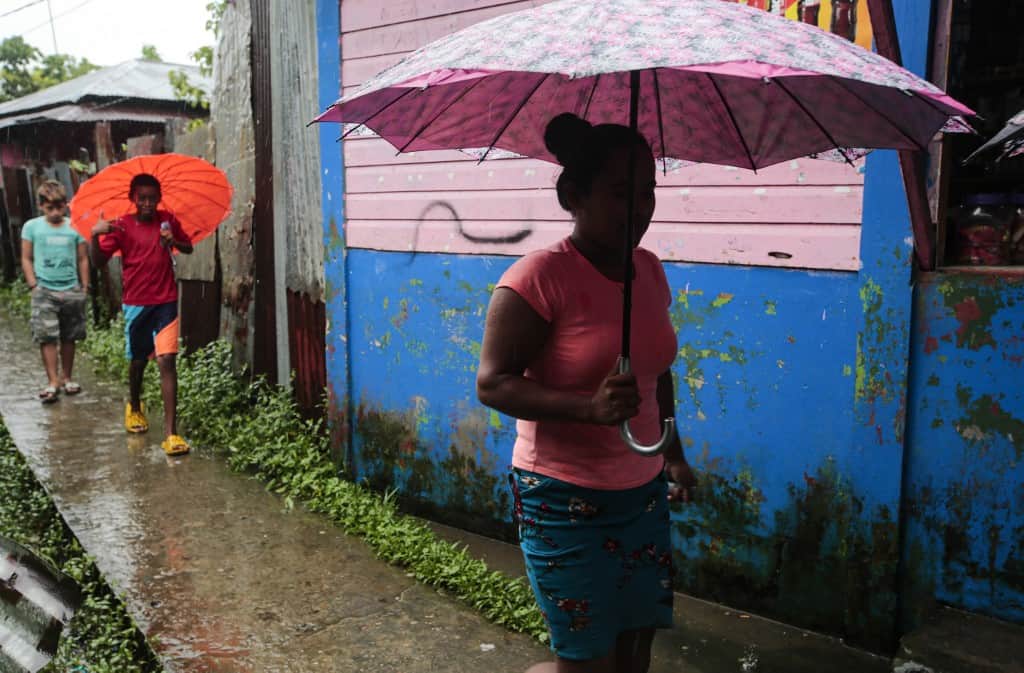Tropical Storm Bonnie, which impacted the south of Nicaragua with strong winds and rains, left the continental territory this Saturday towards the Pacific with no major damage reported, although it could strengthen during its path towards the coasts of Mexico.
After its journey from the southeastern tip of Nicaragua, “Bonnie moved to the Pacific coast of Nicaragua”. Wind and heavy rain continues in the country and in northwestern Costa Rica, according to the latest report Saturday morning from the U.S. National Hurricane Center (NHC).
It is moving at a speed of 26 km/h, with winds of up to 65 km/h. In the Pacific, “Bonnie will remain parallel to the coasts of El Salvador, Guatemala and southern Mexico through Tuesday,” the NHC added.
This Saturday morning, citizens evacuated to shelters began to return to their homes. In the capital, Managua, the rain was intermittent and intensified at times, while the storm moved away.
Light damage from Tropical Storm
The center of Bonnie made landfall Friday night in the Caribbean, near the border between Nicaragua and Costa Rica.
In its path, passing Lake Nicaragua, the wind and rains caused an increase in river flows, falling trees, detached roofs, some flooded houses and suspension of power, but there were no reports of human damage, according to initial local reports.
Authorities have not yet issued a report on the impact of the storm within the country.
Prior to Bonnie’s arrival, Nicaragua’s disaster prevention system (Sinapred) declared alerts “for the damage it could cause at the time of its impact, transit and exit along the Pacific coast”.
Evacuations were carried out “throughout the country”, said Vice President Rosario Murillo to official media, without specifying figures.
In Bluefields, an important Caribbean port city of almost 60,000 inhabitants, close to the point where the storm entered on Friday, 34 shelters were set up.
Residents of the communities of Río Maíz and Monkey Point were also relocated to Bluefields. According to the mayor of the city, Carla Martín, the impact of the storm was expected in those regions.
Return to communities
After the passing of the storm, Bluefields returned to normal.
Mayor Martin told AFP that there are no reports of “deaths or damages (…) everything is normal, the naval force will return today to their communities to the people who were evacuated”.
“We were afraid because we already went through a hurricane in 2020 in Puerto Cabeza”, in the northern Caribbean, said fisherman Oswaldo Gamboa, while he was preparing to resume work in one of the boats returning to the dock.
In El Canal, a poor neighborhood of Bluefields with some 3,000 inhabitants and fragile houses, the neighbors were also returning to routine.
On the island of Ometepe, in Lake Nicaragua, and in Rivas (south of the country), local brigades cleared the roads by removing fallen trees.
In Costa Rica and El Salvador
Some 3,500 people had been evacuated from Caribbean areas in Costa Rica, preventively, to 54 shelters. On Saturday they were still there, according to the National Emergency Commission (CNE), which evaluated the possibility of their return.
El Salvador maintained a green alert, of observation, anticipating a “strengthening” of winds and rains by Bonnie, which will move off its coasts during Saturday.
Guatemala’s meteorological service was also monitoring it, ruling out that for the moment it represents a danger for the country, although there will be rains during the weekend.
In November 2020 hurricanes Eta and Iota hit Central America within 15 days of each other, leaving at least 244 people dead.






